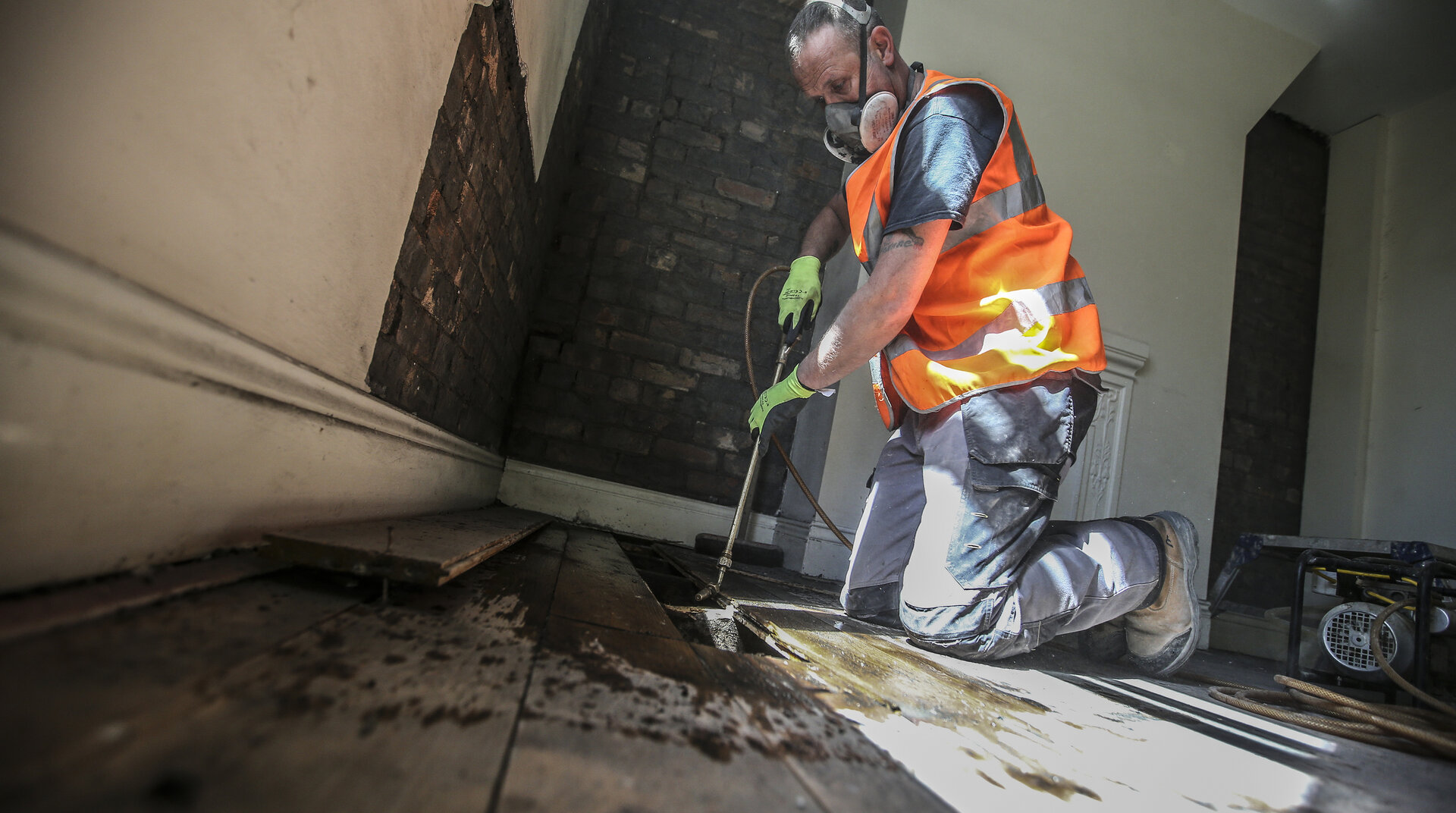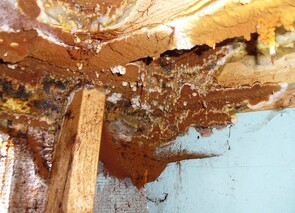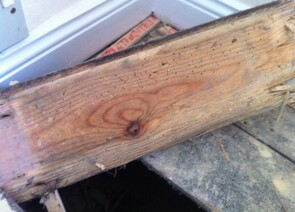Timber Treatment
At Hepple Property Care Ltd, we have many years experience in identifying timber defects in buildings. As with damp inspections it is recommended that this is only carried out by qualified surveyors as mis-diagnosis can be costly. We are proud to say we have arguably the most experienced surveying team in the North East to help with all your building needs. All of our surveyors are CSRT qualified and have passed examinations run by the Property Care Association, our trade body.
Dry Rot
This can occur in new and old buildings where ideal conditions exist for the fungus to exist. Timbers that are exposed to dampness will be at risk if the moisture content is raised above 20%. Microscopic spores present in the air can germinate on untreated timber and the life cycle of the Dry Rot Fungus- Serpula lacrymans begins.
The first signs of the fungus will usually be the mycelial growths present on the timber and as well as breaking down the timber these strands can also grow across masonry, concrete etc in order to attack new timber. Eventually, one or several fruiting bodies will appear producing millions of microscopic spores which are brick red in colour. Correct identification, eradicating the source of the moisture, carrying out professional treatment and providing ventilation are all essential elements in eradicating the fungus.
Wet Rots
This is more commonly encountered than other types of fungi where prolonged wetting has occured to timber raising the moisture content to usually above 25%. While timber will be broken down, the attack will stay limited to the affected area unlike Dry Rot which can spread more rapidly to other areas. There are many types of Wet Rots and some are often confused with Dry Rot to the untrained eye.
Coniophora puteana is the type of Wet Rot most found in buildings, often to ground floor areas where sub floor conditions are ideal for it to occur. However, it can also be present in different forms to other timbers such as external door and window frames, skirting boards, roof timbers etc.If you believe that you have any of the above problems or require a detailed survey and comprehensive report, please do not hesitate to get in touch.
Insect Infestation/Woodworm
This can be found in structural timbers and the first signs of insect damage will usually be the adult beetle exit flight holes as they emerge from the wood. The adult beetle will mate, lay its eggs in grooves in the timbers and the life cycle can start again. The damage is generally caused to the timber as the beetle tunnels inside the timber, usually for a couple of years. There are three main types of insect encountered in the North East of England that attack timber, The Common Furniture Beetle- Anobium punctatum, The Bark Borer Beetle- Ernobius mollis and The Wood Boring Weevil. These insects again require correct identification as the treatment and eradication can be quite different.
We have qualified staff that are able to assess and treat this for you and all works are carried out to the PCA Code of Practise. Long term guarantees and insured guarantees can then be offered for complete peace of mind.








